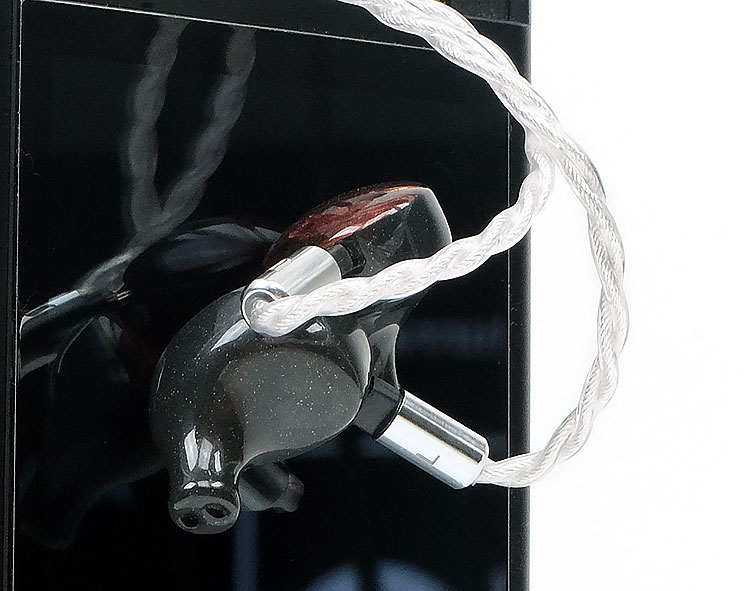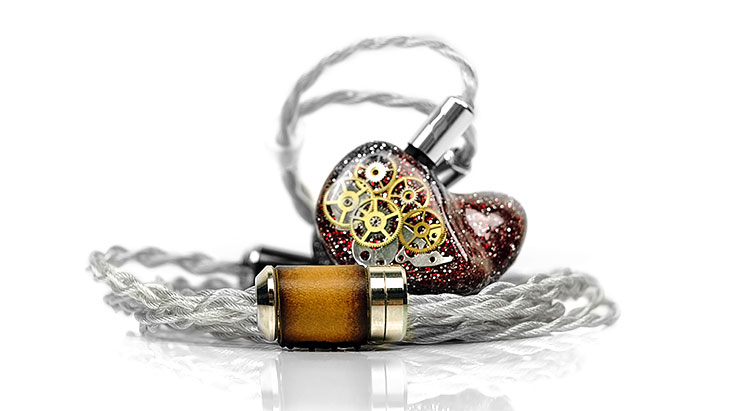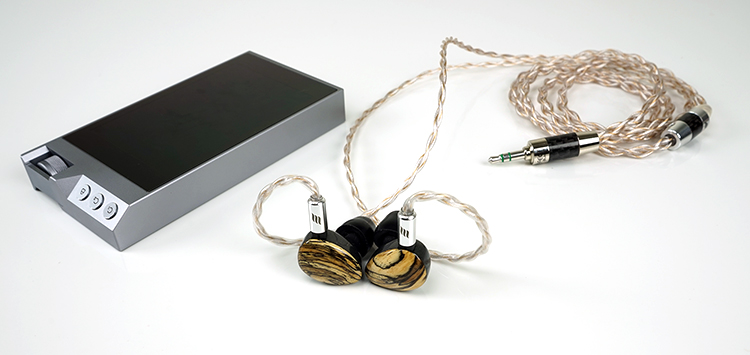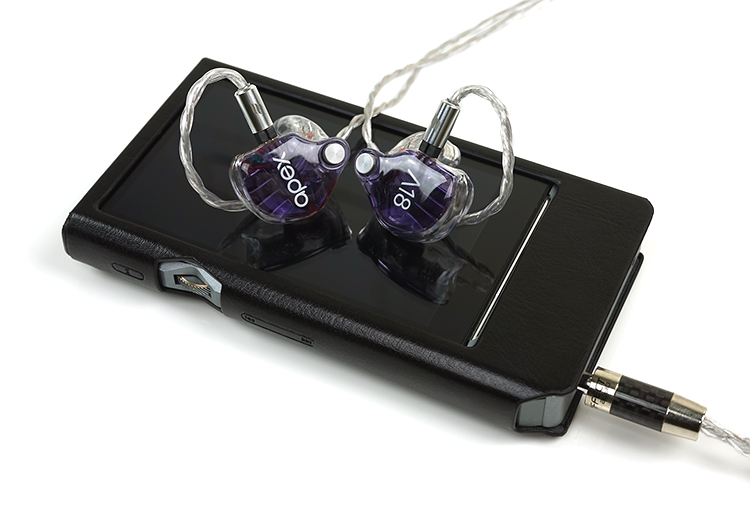Sound Impressions
Impressions were done using the Lotoo PAW Gold Touch as the source and for monitors, the Empire Ears Phantom, 64 Audio A18, Earsonics Grace, and Campfire’s Solaris/Andromeda.
Timbre
This is a pure silver cable? Nah, it can’t be, silver is not supposed to sound like this. Now, track back a little to the Thor II review and I did remark at the time how impressively smooth its treble was and they did seem to get the harmonic balance more neutral and clean than bright.
However, the Cleopatra is way more liquid in tone and timbre and far smoother also. Its treble makes the Thor II alternative seem a little dry and lacking in weight by comparison. Certainly, compared to the Lionheart the treble is a lot smoother in tone.
I suspect if you A/B those two cables you might actually pick the Cleopatra as the copper cable and not the Lionheart. You could say Cleopatra is closer to the organic sound of Leonidas II in some respects.
Yet, compared to Thor II it loses nothing in terms of clarity, and if anything, it gains a bit more of that Leonidas II-type 3-dimensional midrange openness.
Dynamic Range
What I loved about Thor II, Cleopatra has retained and improved on it substantially. Granted the Cleopatra is a little warmer, but it is also meatier on the low end compared to the Thor II.
I always thought the Thor II with the right monitor sounded punchy and fun, a nice all-rounder that will improve the dynamic range on any high-performing monitor.
The Cleopatra still retains that punchiness but now extends that clarity and weight right into the sub-bass. That surprised me a lot. Now you get power and with a bass-responsive monitor such as the Empire Ears Phantom, you get a much-improved level of physicality and weight along with it.
Instruments will get a palatably stronger bass fundamental and when combined with the surprising levels of warmth deliver excellent weight and authority, especially on kick drums, bass, and electric guitar.
With the Lionheart, you also get similar levels of warmth but not the same depth or snappiness. With the Thor II, you get similar levels of punchiness but again, not the same low-end presence and texture.
And to top it all off, the Cleopatra sounds in no way congested or slow. As you might expect from a silver cable?
Example: Cyclothymique
One example that I have been running with is a sparsely mixed synth-wave/Prog Rock tune called Cyclothymique by a band called Analog 80.
It’s heavy on the mids to high-frequency snyth layering with a punchy metronome-like low-end rhythm that sometimes sits on the mid-bass other times it moves down a few bars into the sub-bass on the turn of the 4/4 beat.
Around the 4th minute, it also chucks in some very cool Dave Gilmore-style guitar solo and twists it into a prog-rock extravaganza which I just love. I used this track to test Cleopatra against Thor II and Lionheart because it also throws in a small tambourine/percussion-type accompaniment and it’s slightly on the forward side in the mix.
With the Lionheart, this percussion layer was a little harder and drier sounding compared to the Thor II but both sounded drier compared to the Cleopatra. Cleopatra delivered a smoother almost euphonic harmonic tone to the percussion passage and also a little more body.
It also delivered a much more authoritative low-end response and offered up a bit more space around that Gilmore-type guitar solo. Very impressive stuff.
Synergy
Play to the Strengths
The surprise tuning of the Cleopatra; that liquid smoothness and low-end power make for some interesting matches. I think the first thing to note, however, is to pair it with a monitor that can deliver decent bass, to begin with. It will not deliver sub-bass physicality or a body where none really exists in the first place.
During our comparison work in the section below, for example, I found the 64 Audio A18’s lighter low-end presence and body not to get a significant enough change to warrant being a recommended pairing. I would still gravitate more to Leonidas II’s beautiful holographic staging properties as its strength really is in its soundstage.
Switch the Cleopatra instead to the fuller-sounding Empire Ears Phantom and comparing with the likes of the already punchy Thor II you can clearly hear a much more planted low-end with the better body and yet still a punchy musical tone to the pairing.
Multi-Dimensional
I also do not want to overemphasize the low-end power of Cleopatra because it is a lot more multi-dimensional than that.
For instance, Campfire Audio’s Super Litz Solaris pairing does have a bit more body on its low end than the Cleopatra but it’s also a little softer and not as well-defined or spacious as the Cleopatra paired to the Solaris. The Super Litz also sounds a touch more intimate and not as smooth in its treble performance with Solaris compared to the Cleopatra.
For those very reasons I just love Cleopatra with the CA Andromeda. You get a little more low-end power than with the stock cable, a smoother but no less detailed top-end with more treble body, and a richer more engaging midrange.
The vocals are just excellent on this pairing also. It doesn’t dull any natural sibilance in female vocals which would kill it for me. Instead, it loses a bit of leanness delivering a far more liquid and very smooth sound indeed.
Select Comparisons
Effect Audio Leonidas 2
$888
Technical
Both of these cables form part of the Heritage Series with the Leonidas II the more expensive of the two and the current 4-wire flagship of this category.
The Leonidas II differs externally from the use of Patina-Style leather accents on the similar casted stainless-steel Y-Split barrel as the Cleopatra. Both use EA Ultraflex PVC jacket materials and both have a 26AWG wire size making them handle in almost the same microphonic and tangle-free manner.
They differ markedly though on the inside with the Leonidas II using a mix of palladium-plated silver & Litz silver compared to the Cleopatra which uses a high-grade UP-OCC silver in a 7-core Litz build but without the expensive palladium plating. Both use the golden ratio for strand layering and both use individually enameled strands in that layering.
The Cleopatra also goes on a step further and uses the multi-stranding technique for their geometry which is not deployed on the Leonidas II. An advantage you could say to the Cleopatra? Possibly, though the use of palladium on the Leonidas II would suggest a different focus for that cable.
Tuning
The difference between these two is in the holographic nature of the soundstage, particularly in the mids with the Leonidas II versus the slightly greater sub-bass weight and power of the Cleopatra.
We began our test with a Lotoo Paw Gold Touch and the A18 and to be honest the A18 does not seem to really play to the strengths of the Cleopatra.
It’s a much better match with the Leonidas II simply because it loves a good soundstage and is a little light on the low end. The Cleopatra can tweak that but not transform it and is better off with a monitor that has plenty of low-end, to begin with, such as the Phantom.
With the Phantom, the differences were a lot easier to discern. The Cleopatra will give you a bit more low-end solidity and power ensuring the Phantom sounds planted and punchy.
The Leonidas II pulls back a bit and sounds a little more mid-bass warm and sub-bass neutral. In return, the mids are more revealing with a bit more instrumental separation sounding the more vivid of the two in terms of sucking you into the center of the soundstage.
The Cleopatra is smooth and really good on instrumental separation with the Phantom but it tends to stage in a more traditional in front or left/right manner and thus sounds the more neutral of the two in the mids.
For the highs, I find the Cleopatra just a shade more ‘silvery’ and neutral sounding in its timbre than the Leonidas II which is a little sweeter, or a bit more liquid sounding in its attack and tone.
Effect Audio Lionheart
$499
Technical
The Lionheart is the entry-level cable in the Heritage series and like the Cleopatra, it is a 26AWG wire cable and uses EA’s UltraFlex PVC jacketing so the handling and comfort levels are almost the same.
The key differences externally are the upgraded stainless-steel Y-Split barrel on the Cleopatra which is lighter and more refined looking than the older carbon fiber printed barrel on the Lionheart. The other difference is the improved low-profile memory wire materials that look almost invisible on the Cleopatra.
There are also a lot of quantitative differences between the two in terms of materials and geometry. The Lionheart is based on copper and uses a Type II GPC (gold-plated copper) & SPC (silver-plated copper) hybrid wire whereas the Cleopatra is silver using a high-grade UP-OCC pure silver wire.
Both use the multi-sized stranding technique for high-frequency performance improvements but the Cleopatra goes one step further with its gold ratio layering geometry build ‘borrowed’ from the flagship Leonidas II.
Tuning
We used the Earsonics Grace and EE’s Phantom during our testing with the Cleopatra and the Lionheart and found some pretty obvious differences between these two Heritage Cables. The first is the low-end power.
The Cleopatra has more sub-bass reach and presence that showed up right away in the two monitors. The Lionheart rolled off a bit more and delivered instead a little bit of the traditional copper richness and mid-bass to lower mids warmth. As such, you will find the staging on the Cleopatra to sound a little deeper.
The second difference was the treble timbre. I found the Lionheart to be as peppy if not peppier (energetic) in the upper mids and lower treble on both these monitors when compared to the Cleopatra. However, the Lionheart had a slightly harder edge to its percussion notes whereas the Cleopatra sounded a touch more liquid or smoother in its attack.
The final difference is in the mids. To some extent, the Lionheart’s vocal presence and perhaps aspects of its instrumental positioning around the 1k marker (ES Grace) will seem closer and more intimate.
By comparison, Cleopatra will sound a touch more neutral but also more open-sounding with superior instrumental separation. Of the two, the Cleopatra is better for creating a sense of space and air and moves closer to the Leonidas II in that regard.
Effect Audio Thor II
$399
Technical
The Thor II is part of EA’s Premium range and I rate it as one of the best all-rounder silver 4-wire builds in their collection for its punchy but resolving and smooth response.
It uses the same UltraFlex PVC cable jacket and 26AWG build as the Cleopatra. The Thor II is slightly heavier with its older carbon fiber finished Y-Split barrel that is heavier and not as refined-looking as their new stainless-steel variant on the Cleopatra.
The memory wire material build is also a bit thicker and more noticeable on the Thor II compared to the low-profile finish of the Cleopatra. Lastly, the Thor II used a rubbery chin cinch compared to the higher-quality stainless-steel chin cinch of the Cleopatra.
Internally, the Cleopatra uses a higher grade UP-OCC silver material in a 7-core Litz build compared to the Thor II. Both cables use the multi-sized stranding technique for high-frequency performance improvements but the Cleopatra goes one step further with its gold ratio layering geometry build ‘borrowed’ from the flagship Leonidas II.
Tuning
A few differences here, all on the plus side. Both are punchy on the low end, something I have always liked about Thor II. However, the Thor II seems to be more of a mid-bass punch on the Empire Ears Phantom and the Cleopatra is thicker, more weighted, and delivers better sub-bass power in comparison.
That additional power from the Cleopatra pairing also delivers a better level of PRaT and a more convincing bass fundamental in lower-pitched instruments compared to the Thor II. You basically get a ‘juicier’ timbre from Cleopatra compared to the drier and slightly leaner tone of the Thor II instruments.
That timbral difference creeps up into the vocals also. You might find the Thor II perhaps a little cleaner but also a little harder with more chance of sibilance compared to the wetter richer sound of the Cleopatra vocals.
If the Cleopatra is a little more ‘silvery’ in its treble compared to the Leonidas II then the Thor II is just that compared to the Cleopatra. It is a little brighter and more forward-sounding with the Phantom so those who like something more aggressive might still want to check out the Thor II, especially for percussion timbre and presence.
The Cleopatra top-end, however, sounds a little more natural to me with a bit more treble body and detail. Overall, just a bit more coherent sounding on the Phantom.
Our Verdict
Dump everything you know about silver cables and their associated memes on being super clean, lean, and bright. The Effect Audio Cleopatra is anything but that. It is smooth, warm in many respects, and delivers some excellent sub-bass presence and power.
It takes a nod from Thor II’s dynamic range and punchiness and simply improves on the perceived depth and weight. It pays homage to the Leonidas II with that slightly warmer tone and a more spacious midrange that allows a rich level of instrumental layering to simply breathe. It also retains excellent treble detail and body without ever coming off as too rounded or dull.
If you absolutely need brightness, aching neutrality, and a forward high-contrasting silver sound Cleopatra is not it. If you have a bass light monitor there is little chance the Cleopatra will really shine or show its capabilities. There is only so much it can do.
Instead, pair this cable with monitors that are capable of good bass and open-sounding mids and let it play to its obvious strengths. This cable will surprise you.
Effect Audio Cleopatra Specifications
- 26 AWG
- Selected UP-OCC Pure Silver
- Golden Ratio Dispersion Multi-Sized Stranded
- Woven Kevlar-infused Septuplet Core Bundle Litz
- Individually Enameled Strands
- Superior PSquared / P-EA plugs
- EA UltraFlexi Jacket






